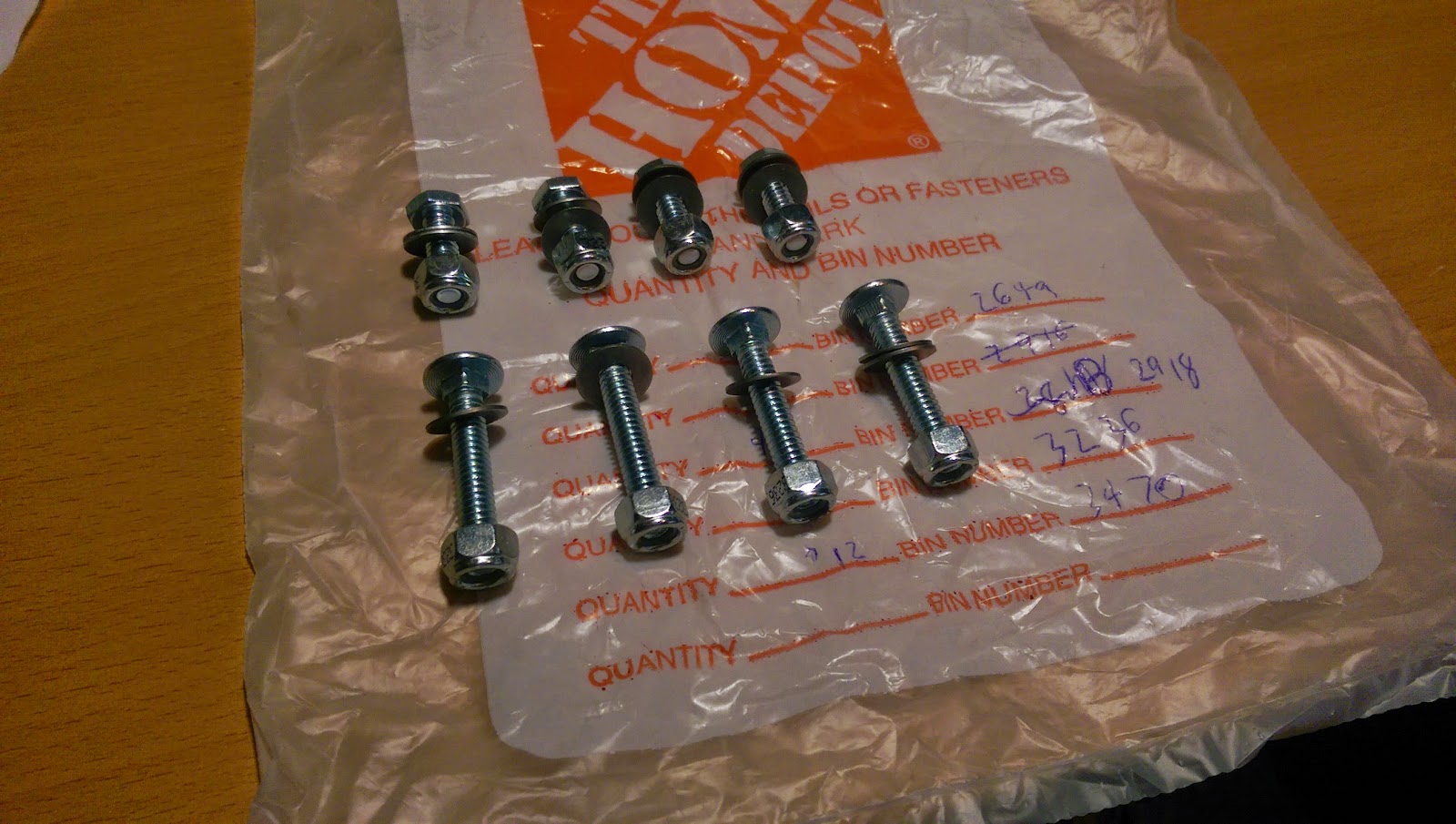Something that I puzzled over for a long time is the gas tank. What am I going to do for the gas tank? Then I found this in the back shop, it's a gas tank that is off of an old Briggs and Stratton lawn mower engine that isn't running. I looked like a good size for the bike so i took it. One problem is the fact that the carb was built into the gas tank.
What I did to fix this problem is cut a metal plate to fit over the whole where the carb used to be. I used the gasket that was between the carb and tank to mark out the shape of the plate. I was also able to mark out the wholes for the screws this way. Once cut out I sanded the edges smooth, drilled wholes, and although I don't have a picture of it, I painted it gloss black.

Once the plate was done it was time to deal with the gas tank itself. First I stripped it of it's very old very bad paint job. For this I used a wire brush head on an angle grinder, this tool easily stripped the paint off the tank. Once stripped of paint there was another problem. I needed a spout on the bottom of the tank so gas could flow to the carb on the motor. My solution was to drill a whole in the bottom of the tank and use a strong adhesive called 'JB power weld' to secure a spout to the bottom of the tank. the JB weld worked like a charm holding the spout firmly.
Once the fuel delivery was dealt with I had to figure out my mounting system. I used lots of JB weld and some strong hose clamps to make the tank mountable. I used lots of JB weld to make sure the clamps would be secure enough to hold the tank after its been clamped to the frame.
Once all of the modifications were done with the tank, it was time for paint. So I used some masking tape to cover up all of the places I didn't want paint like in the tank so I covered the filler cap, and the area where the plate will go. Then I painted it with two coats of a nice new gloss black paint job that matches the plate. I looks really good now that it's done.

























